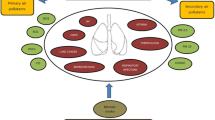Abstract
Introduction
Non-invasive screening of carboxyhemoglobin saturation (SpCO) in the emergency department to detect occult exposure is increasingly common. The SpCO threshold to consider exposure in smokers is up to 9%. The literature supporting this cutoff is inadequate, and the impact of active smoking on SpCO saturation remains unclear. The primary objective was to characterize baseline SpCO in a cohort of smokers outdoors. Secondary objectives were to explore the impact of active smoking on SpCO and to compare SpCO between smokers and non-smokers.
Methods
This was a prospective cohort pilot study in two outdoor urban public areas in the USA, in a convenience sample of adult smokers. SpCO saturations were assessed non-invasively before, during, and 2 min after cigarette smoking with pulse CO-oximetry. Analyses included descriptive statistics, correlations, and a generalized estimating equation model.
Results
Eighty-five smokers had mean baseline SpCO of 2.7% (SD 2.6) and peak of 3.1% (SD 2.9), while 15 controls had SpCO 1.3% (SD 1.3). This was a significant difference. Time since last cigarette was associated with baseline SpCO, and active smoking increased mean SpCO. There was correlation among individual smokers’ SpCO levels before, during, and 2 min after smoking, indicating smokers tended to maintain their baseline SpCO level.
Conclusions
This study is the first to measure SpCO during active smoking in an uncontrolled environment. It suggests 80% of smokers have SpCO ≤ 5%, but potentially lends support for the current 9% as a threshold, depending on clinical context.


Similar content being viewed by others
References
Ruth-Sahd LA, Zulkosky K, Fetter ME. Carbon monoxide poisoning: case studies and review. Crit Care Nurse. 2011;30(6):303–14.
Hampson NB, Weaver LK. Carbon monoxide poisoning: a new incidence for an old disease. Undersea Hyperb Med. 2007;34(3):163–8.
Centers for Disease Control and Prevention. Carbon monoxide exposures—United States, 2000-2009. MMWR Morb Mortal Wkly Rep. 2011;60:1014–7.
Ernst A, Zibrak JD. Carbon monoxide poisoning. N Engl J Med. 1998;339(22):1603–8. https://doi.org/10.1056/NEJM199811263392206.
Weaver LK. Clinical practice: carbon monoxide poisoning. N Engl J Med. 2009;369:1217–25.
Nikkanen H, Skolnik A. Diagnosis and management of carbon monoxide poisoning in the emergency department. Emerg Med Pract. 2011;13(2):1–14.
Bledsoe BE, Nowicki K, Creel JH, et al. Use of pulse CO-oximetry as a screening and monitoring tool in mass carbon monoxide poisoning. Prehosp Emerg Care. 2010;14(1):131–3. https://doi.org/10.3109/10903120903349853.
Shamir MY, Aharon A, Todd S. The current status of continuous noninvasive measurement of total, carboxy, and methemoglobin concentration. Anesth Analg. 2012;114(5):972–8. https://doi.org/10.1213/ANE.0b013e318233041a.
Piatkowski A, Ulrich D, Grieb G, Pallua N. A new tool for the early diagnosis of carbon monoxide intoxication. Inhal Toxicol. 2009;21(13):1144–7. https://doi.org/10.3109/08958370902839754.
Roth D, Hubmann N, Havel C, Herkner H, Schreiber W, Laggner A. Victim of carbon monoxide poisoning identified by carbon monoxide oximetry. J Emerg Med. 2011;40(6):640–2. https://doi.org/10.1016/j.jemermed.2009.05.017.
Suner S, McMurdy J. Masimo Rad-57 pulse CO-oximeter for noninvasive carboxyhemoglobin measurement. J Expert Rev Med Devices. 2009;6(2):125–30. https://doi.org/10.1586/17434440.6.2.125.
Barker SJ, Curry J, Redford D, Morgan S. Measurement of carboxyhemoglobin and methemoglobin by pulse oximetry: a human volunteer study. Anesthesiology. 2006;105(5):892–7. https://doi.org/10.1097/00000542-200611000-00008.
Roth D, Herkner H, Schreiber W, Hubmann N, Gamper G, Laggner AN, et al. Accuracy of noninvasive multiwave pulse oximetry compared with carboxyhemoglobin from blood gas analysis in unselected emergency department patient. Ann Emerg Med. 2011;58(1):74–9. https://doi.org/10.1016/j.annemergmed.2010.12.024.
Suner S, Partridge R, Sucov A, Valente J, Chee K, Hughes A, et al. Non-invasive pulse CO-oximetry screening in the emergency department identifies occult carbon monoxide toxicity. J Emerg Med. 2008;34(4):441–50. https://doi.org/10.1016/j.jemermed.2007.12.004.
Centers for Disease Control and Prevention. Clinical guidance for carbon monoxide (CO) poisoning after a disasters 2014. Available at: http://emergency.cdc.gov/disasters/co_guidance.asp.
Smollin C, Olson K. Carbon monoxide poisoning (acute). Systematic review 2103. BMJ Clin Evid 2010.
Stewart RD, Baretta ED, Platte LR, Stewart EB, Kalbfleisch JH, van Yserloo B, et al. Carboxyhemoglobin levels in American blood donors. JAMA. 1974;229(9):1187–95. https://doi.org/10.1001/jama.1974.03230470029019.
Aronow WS, Rokaw SN. Carboxyhemoglobin caused by smoking nonnicotine cigarettes. Effects in angina pectoris. Circulation. 1971;44(5):782–8. https://doi.org/10.1161/01.CIR.44.5.782.
Aronow WS. Effect of non-nicotine cigarettes and carbon monoxide on angina. Circulation. 1980;61(2):262–5. https://doi.org/10.1161/01.CIR.61.2.262.
Sokolova-Djokic L, Milosevic S, Skrbic R, et al. Pulse carboxyhemoglobin-oximetry and cigarette smoking. J BUON. 2011;16(1):170–3.
Russell MA. Blood carboxyhaemoglobin changes during tobacco smoking. Postgrad Med J. 1973;49(576):684–7. https://doi.org/10.1136/pgmj.49.576.684.
Jay GD, Tetz DJ, Hartigan CF, Lane LL, Aghababian RV. Portable hyperbaric oxygen therapy in the emergency department with the modified Gamow bag. Ann Emerg Med. 1995;26(6):707–11. https://doi.org/10.1016/S0196-0644(95)70042-0.
Weaver LK, Howe S, Hopkins R, Chan KJ. Carboxyhemoglobin half-life in carbon monoxide-poisoned patients treated with 100% oxygen at atmospheric pressure. Chest. 2000;117(3):801–8. https://doi.org/10.1378/chest.117.3.801.
Radford EP, Drizd TA. Blood carbon monoxide levels in persons 3–74 years of age: United States, 1976–80 US Dept of Health and Human Services; Advance Data 76; March 17, 1982, Hyattsville, MD (1982) [US Dept of Health and Human Services publication PHS 82–1250].
Plante T, Harris D, Savitt J, Akhlaghi F, Monti J, Jay GD. Carboxyhemoglobin monitored by bedside continuous CO-oximetry. J Trauma. 2007;63(5):1187–90. https://doi.org/10.1097/01.ta.0000242769.04246.5d.
Naples R, Laskowski D, McCarthy K, Mattox E, Comhair SAA, Erzurum SC. Carboxyhemoglobin and methemoglobin in asthma. Lung. 2015;193(2):183–7. https://doi.org/10.1007/s00408-015-9686-x.
Yasuda H, Yamaya M, Nakayama K, Ebihara S, Sasaki T, Okinaga S, et al. Increased arterial carboxyhemoglobin concentrations in chronic obstructive pulmonary disease. Am J Respir Crit Care Med. 2005;171(11):1246–51. https://doi.org/10.1164/rccm.200407-914OC.
Funding
None.
Author information
Authors and Affiliations
Corresponding author
Ethics declarations
Conflict of Interest
Dr. Suner has received an unrestricted research grant from Masimo Inc. for a separate research. Drs. Schimmel, George, Schwarz, Yousif, and Hack have no potential conflicts of interest.
Additional information
Part of these data were presented as an oral presentation at the 2015 American College of Emergency Physicians (ACEP) Annual Scientific Assembly in Boston, MA, and some data were presented as a platform presentation and poster presentation at the 2017 American College of Medical Toxicology (ACMT) Annual Scientific Meeting in San Juan, Puerto Rico.
Rights and permissions
About this article
Cite this article
Schimmel, J., George, N., Schwarz, J. et al. Carboxyhemoglobin Levels Induced by Cigarette Smoking Outdoors in Smokers. J. Med. Toxicol. 14, 68–73 (2018). https://doi.org/10.1007/s13181-017-0645-1
Received:
Revised:
Accepted:
Published:
Issue Date:
DOI: https://doi.org/10.1007/s13181-017-0645-1




